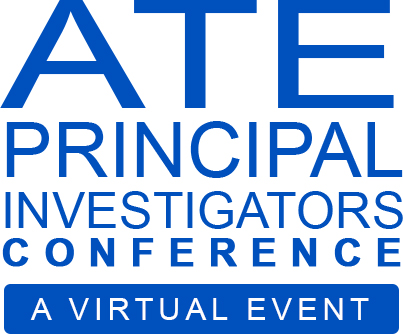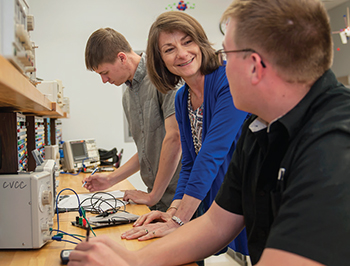Two priorities for most technician education programs are connecting with industry partners and recruiting students from populations historically underrepresented in STEM careers.
At the ATE Principal Investigators’ Conference this week Marcella Gale of Central Virginia Community College (CVCC) and Zack Hubbard of Rowan-Cabarrus Community College in North Carolina explained how they used Advanced Technological Education grants to develop outreach activities that are finding the sweet spot of accomplishing both goals simultaneously.
‘Like 4-H for manufacturing’
“We need all the help we can get to recruit students, for sure,” said Gale, sharing that the leader of Virginia’s Manufacturing Extension Partnership (MEP) introduced her to several manufacturers and invited her to serve as the education representative at an MEP event for employers. Gale is an assistant professor of mechatronics and the program head for mechatronics, networking computer and electronics technology-computer networking, and energy technology at CVCC.

“MEP is like 4-H for manufacturing,” Gale said of the public-private partnership with centers in all 50 states and Puerto Rico. It serves small- and medium-sized manufacturers and is part of the National Institute of Standards and Technology in the U.S. Department of Commerce.
It was just this summer that Gale was introduced to MEP by Evelyn Brown, director of extension research and development at North Carolina State University. Brown is also the principal investigator of the recently funded Advanced Technological Education Coordination Network for Knowledge Sharing in Robotics/Automation and Cybersecurity (TRACKS-CN). The goals of this ATE project include connecting community college students to potential employers via the MEP network. It has partnerships with other organizations that provide resources to work with populations not traditionally involved in manufacturing, according to Brown.
‘The coolest balance’
In an interview, Gale said her own ATE project (Improving Mechatronics Technician Training for the Advanced Manufacturing Industry) has been “hugely” helpful in building connections with the region’s high-tech manufacturers in recent years. The grant-funded professional development for a faculty member to earn industry certification in programmable logic controllers (PLC) and the purchase of four PLC trainers.

Students who earn the college’s PLC certificate, which is one of several stackable credentials in CVCC’s mechatronics degree, quickly find employment “because it’s a highly needed skill in this area,” Gale said.
As the program has built a reputation for graduating students with high-level skills, it has increased employers’ interest in the entire mechatronics program. This has led to companies hosting groups of students for tours of their facilities and donating equipment.
“If you can help industry hire appropriately trained employees, then they will be grateful,” Gale said.
Gale said the mechatronics program is “rocking and rolling this fall” with full classes. She is especially enjoying the extra section of introductory electronics that she is teaching. It has nine students.
“It’s just the coolest balance. There are [nearly] an equal balance of Black and White. There’s females and males. There’s all ages. I mean, we have one kid I think he’s 17; and the oldest is probably close to my age in their 50s or 60s. And it’s just the best class. It feels like an even playing field for everybody,” she said.
Taste of Industry project
Hubbard, dean of technical programs at Rowan-Cabarrus, reported the Women in Engineering and Industrial Technology (WE-IT) project has industry tours and four other components to recruit female students.
One subtle and low-cost but “very powerful aspect” of the program involves having students in introductory English and computer science courses write papers based on their exploration of a technical degree program offered at the college.
The project’s Taste of Industry is building positive connections with high school teachers and guidance counselors who influence teens’ career decisions. The career influencers spend a full day on campus attending a series of workshops for which they earn continuing education units. The workshops teach them about welding, machining, and other advanced technology careers. “When they make those rounds we give them lesson plans to take with them to introduce students to the topic,” Hubbard said.
WE-IT Industry Speaks events have featured women employed in various industries. The presentations are open to the entire college community and to high school students, who are bused to campus.
“This allows students to get exposure to something they might not have in their day-to-day life,” he said.
WE-IT started a Navigators Student Club that has been combined with the college’s Skills USA chapter with special activities, such as field trips, for female students.
ATE principal investigators in the audience for the virtual session had these suggestions for recruiting students and employers:
- Partner with non-profit organizations that serve underrepresented groups.
- Have students make presentations at meetings of industry advisory boards or business industry leadership teams.
- Invite employers to showcases of students’ capstone projects.
- Offer companies short, free courses for their incumbent technicians.
- Invite local industry leaders to speak to classes.
- Recruit adjunct instructors from companies that hire program graduates.

